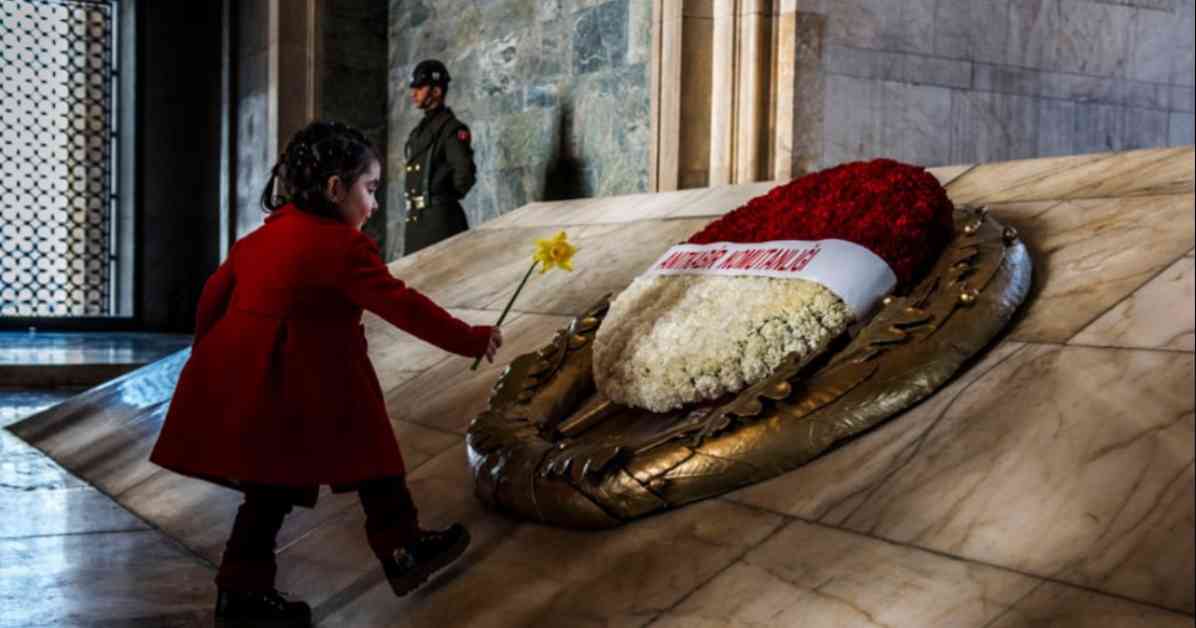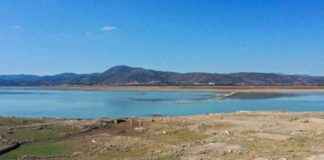Guardians of the Peaceful Sleep Trust – Sözcü Newspaper
Ankara, Turkey – Anıtkabir, the final resting place of the great leader Mustafa Kemal Atatürk, stands as a symbol of the nation’s respect and admiration for the founder of the Turkish Republic. As visitors approach the entrance, they are greeted by the towering figures of İstiklal and Hürriyet Towers, standing tall in honor of the principles of independence and freedom. Alongside these, the Mehmetçik, Müdafaa-i Hukuk, Barış, 23 Nisan, Misak-ı Milli, İnkılâp, Cumhuriyet, and Zafer Towers also grace the entrance, each adorned with a bronze flag inspired by Seljuk tent architecture.
Representing the Oghuz tribes, 24 Hitite lions guard the path leading to Atatürk’s mausoleum, symbolizing unity and strength. The lions, with their heads bowed in reverence, create a solemn atmosphere of respect as visitors walk past them towards the final resting place of the revered leader.
Every corner of Anıtkabir exudes the spirit of Anatolia, with the walls and floors of the Şeref Hall adorned with colorful marbles brought from various regions of Turkey. The symmetrical torches on either side symbolize the eternal vigilance of those guarding Atatürk’s legacy, while the 40-ton solid red marble slab across the entrance represents Atatürk’s symbolic tomb and the Turkish flag.
Atatürk’s tomb lies 7 meters below ground, surrounded by soil from significant locations such as the Caber Castle in Syria, the Turkish Martyrdom in Korea, Atatürk’s birthplace in Selanik, and various regions of Turkey and the Turkish Republic of Northern Cyprus. This symbolic resting place symbolizes Atatürk’s deep connection to the land he dedicated his life to protect and nurture.
The monumental structure of Anıtkabir immortalizes Atatürk’s legacy through inscriptions of his famous speeches, such as the ‘Address to Youth’ and the ’10th Year Speech,’ displayed on the exterior blocks of the mausoleum. The unique calligraphy designed by hattat Emin Barın features distinctive elements that set it apart from any other script in the world, showcasing a blend of modernity and tradition in honoring the nation’s hero.
Visitors to Anıtkabir can explore a collection of Atatürk’s personal belongings, from his beloved dog Foks’ figurine to the medals he received during his lifetime. The museum also houses Atatürk’s Ottoman and Latin alphabet identification cards, reflecting the transition from the old empire to the modern republic under his leadership.
The Misak-ı Milli Tower at Anıtkabir holds the Special Book of Anıtkabir, where visitors can share their thoughts and reflections on the legacy of the Great Leader. The outer walls of the tower feature quotes from Atatürk’s Misak-ı Milli, emphasizing the importance of national unity and sovereignty.
Every year on the 10th of November, thousands of people of all ages gather at Dolmabahçe Palace to pay their respects to Atatürk on the anniversary of his passing. The emotional connection to the leader is palpable as visitors lay wreaths at the designated spot, bowing in reverence to the man who shaped the destiny of a nation.
The architectural design of Anıtkabir ensures that every visitor bows in respect as they approach Atatürk’s final resting place, with the sloping terrain creating a natural inclination towards the mausoleum. The intricately designed floor of the ceremonial area, adorned with 373 travertine stones in a kilim pattern, adds to the solemnity of the surroundings.
The decision to move Atatürk’s remains from the Etnografya Museum to Anıtkabir’s Rasattepe, at an elevation of 905 meters, symbolizes the eternal presence of the leader overlooking the nation he fought to liberate. The architectural marvel of Anıtkabir, designed by Emin Onat and Orhan Arda, captures the essence of Atatürk’s legacy in a timeless tribute to his enduring spirit.
In conclusion, Anıtkabir stands as a testament to the unwavering respect and admiration Turkey holds for Mustafa Kemal Atatürk, the visionary leader who laid the foundation for the modern Turkish Republic. Each element of the monument, from the symbolic towers to the intricate details of the architecture, reflects the nation’s deep-rooted reverence for the man who shaped the course of history. As visitors from near and far pay their respects at Anıtkabir, they are reminded of Atatürk’s enduring legacy and his timeless message of unity, progress, and peace for future generations to come.





















